The upcoming 28th Annual American Art Conference from Initiatives in Art and Culture May 9-11 in New York provided the perfect excuse for a quick catch-up on the State of American Art. Put simply, how healthy is the market?
There are many opportunities in the American Art market now, even amidst continuing cycles of taste and so those artists and movements, according to Lisa Koenigsberg, founder/president of New York-based Initiatives in Art and Culture.
“The American Art market was significantly strengthened by the events surrounding the U.S. bicentennial in 1976 in which American culture in its many aspects was exhibited, celebrated, plumbed and then effectively marketed,” Ms. Koenigsberg said.
“Since then, the American market writ large has been tested, although there have been robust markets for certain artists, movements, women artists and artists of color,” she said.
“Many are looking to creative approaches to integrating the art of the past and the present and to the historical milestones such as the upcoming 250th anniversary of the country’s founding to left interest in American Art.”
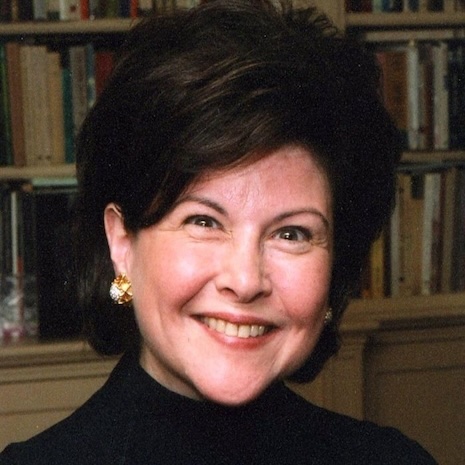 Lisa Koenigsberg is founder/president of Initiatives in Art and Culture
Lisa Koenigsberg is founder/president of Initiatives in Art and Culture
In this discussion, Ms. Koenigsberg goes into detail about the state of American Art, collector interest and how her May 9-11 American Art Conference at Heritage Auctions in midtown Manhattan will update attendees on the market ecosystem. Please read on:
What are you trying to accomplish with the 28th Annual American Art Conference?
To convey convincingly the notion of ‘Multiple Modernities,’ together and create an interwoven tapestry of context, IAC’s American Art Conference explores the late 19th through mid-20th centuries and illuminates the historical underpinnings and multiple approaches to expressions of the modern.
The conference highlights important movements and key players – some already seen as such, others newly introduced – to broaden understanding.
We always want to create something as movement and see things sequentially or in an isolated way. I think it’s the way the mind works but it’s not really how events happen that become history. I’m trying to give history back the unbelievable vitality it had.
With the theme of Multiple Modernities, what are you acknowledging?
Resonating with the era of profound change in which we are living, the theme of IAC’s 28th annual American Art Conference is ‘Multiple Modernities’, which recognizes the coexistence of contemporaneous expressions of the modern in direct or implicit competition.
An appreciation of multiple moderns and the distinctions between the modern, modernity and modernism can help reshape and deepen our understanding of the history of American art.
This approach also accurately reflects the varied approaches taken to understanding the complexity of the ‘Modern’ as attested to by the many perspectives and points of view brought to bear on the material.
What is the state of the American Art market?
There are marvelous opportunities in the American Art market now.
First off, there are always cycles of taste and so those artists and movements – for example, some of the American Impressionists or painters of trompe l’oeil and still life, who might not be cresting at the moment provide opportunities that, say, in 1996 might not have been there.
Now the interest is more focused on modernity and modernism, and yet here the market tends to gravitate to figures identified with canonized groups or schools such as the Arensberg and Stieglitz circles, with many opportunities for acquiring fine works by those who are lesser known or perhaps harder to categorize existing.
In the fields of sculpture and works on paper there are also very important opportunities since sculpture is more challenging to display and therefore perhaps less sought after, while works in paper show the hand of the artist, ways of having been displayed, or can have a more unfinished nature to them, that might not be to the taste of or understood by the prevailing market.
Works on paper have also generally been seen as somehow lesser, prejudice carried over from the mid-19th century, that has perhaps also impacted other media such as fiber, which is now showing a robust presence in the American marketplace.
There has also been a robust increase in demand for works by women artists and artists of color in the past 15 or so years.
Additionally, digital auction platforms have created greater accessibility to the sales, thus facilitating entry into the market for allowing new collectors.
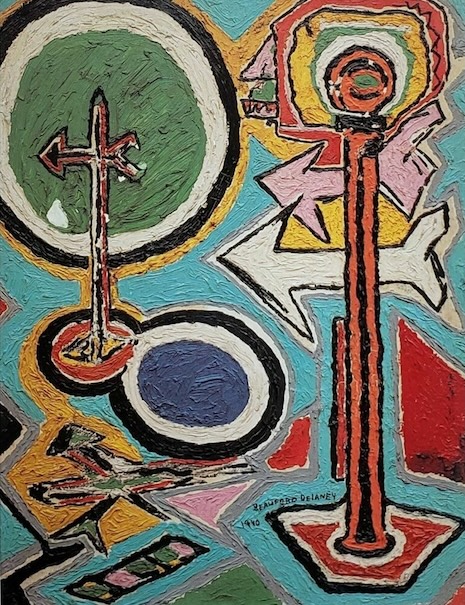 Beauford Delaney, Greene Street, 1940, Oil on canvas, 22½x17½ in. Museum of Fine Arts, Boston, 2011.1824, The John Axelrod Collection Frank B. Bemis Fund, Charles H. Bayley Fund, and The Heritage Fund for a Diverse Collection. All Rights Reserved
Beauford Delaney, Greene Street, 1940, Oil on canvas, 22½x17½ in. Museum of Fine Arts, Boston, 2011.1824, The John Axelrod Collection Frank B. Bemis Fund, Charles H. Bayley Fund, and The Heritage Fund for a Diverse Collection. All Rights Reserved
Are there new collectors entering the market? Who are the emerging buyers?
The American Art market was significantly strengthened by the events surrounding the U.S. bicentennial in 1976 in which American culture in its many aspects was exhibited, celebrated, plumbed and then effectively marketed.
Since then, the American market writ large has been tested, although there have been robust markets for certain artists, movements, women artists and artists of color.
Many are looking to creative approaches to integrating the art of the past and the present and to the historical milestones such as the upcoming 250th anniversary of the country’s founding to left interest in American Art.
Approaching the material in ways that relate to concerns of our moment and to a continuum are of critical important, as are collections that are built across media.
Is there a market for American Art outside of the United States?
Interest in what might be termed more historical American Art has been increasing abroad as attested to by the showing, for example, of the Thomas Cole exhibition at the National Gallery, London (2018), of the John Singer Sargent show at the Tate London (2024), of the Georgia O’Keeffe show at the Pompidou in Paris (2021), and of the Hartley show at the Neue Nationalgalerie, Staatliche Museen zu Berlin (2019).
It is, however, important to note that artists who worked in the period loosely defined by 1945, among them artists such Jackson Pollock and Mark Rothko – who are, after all, American – have long enjoyed a more robust following.
Similarly, such artists as Sol Lewitt, Ellsworthy Kelly, Andy Warhol and more contemporary artists, among them Basquiat, also achieve high prices in hotly contested markets.
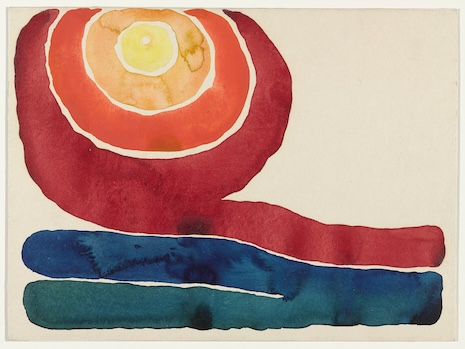 Georgia O’Keeffe, Evening Star No. III, 1917, watercolor on paper mounted on board, 8 7/8 x 11 ⅞, The Museum of Modern Art, New York. Mr. and Mrs. Donald B. Straus Fund, 1958, © 2024 Georgia O’Keeffe Museum / Artists Rights Society (ARS), New York
Georgia O’Keeffe, Evening Star No. III, 1917, watercolor on paper mounted on board, 8 7/8 x 11 ⅞, The Museum of Modern Art, New York. Mr. and Mrs. Donald B. Straus Fund, 1958, © 2024 Georgia O’Keeffe Museum / Artists Rights Society (ARS), New York
How does your content reflect the ins and outs of the American Art market?
On the one hand, the conference devotes considerable attention to major figures whose works have heft in the market beginning, with Mary Cassatt, who is the subject of an imminent exhibition at the Philadelphia Museum of Art.
Explorations of O’Keeffe and Dove also focus on those firmly situated at the higher ends of the market.
At the same time, we discuss modernism in three regions – the Southwest, the South and rural Pennsylvania – which are home to both luminaries and masters to be discovered.
Similarly, attention is paid to the figural and figurative which, although often addressing urgent contemporary social messages and therefore modern, has somehow not been seen as modern artistically, perhaps due to the dominance of a formalist understanding of that term, one which we seek to broaden.
Works on paper, such as those by O’Keeffe, and sculpture, particularly as an effective medium for addressing issues of race, are both discussed.
What are some key sessions that one shouldn’t miss?
Ideally, you shouldn’t miss one session.
Focusing on a time frame bookended by the 1876 Philadelphia Centennial Exposition and the abstract expressionism of the 1940s and 50s, we have enlisted 18 scholars to bring their diverse areas of expertise and approaches to the notion of ‘multiple modernities’ from angles, that together, create an interwoven tapestry of context.
It’s an extraordinary gathering of people coming together with all different perspectives and points of view and various approaches to that pesky word ‘modern.’
It’s an enormous opportunity to really concentrate for two-and-a-half days on a body of work from this period of time and discover new connections, to learn about artists perhaps you didn’t know of or work from a different period in the artist’s oeuvre.
What types of attendees are you anticipating?
We expect collectors, gallerists and those from auction houses, museum professionals, conservators, and academics and scholars – in sum, everyone interested in exploring American Art.
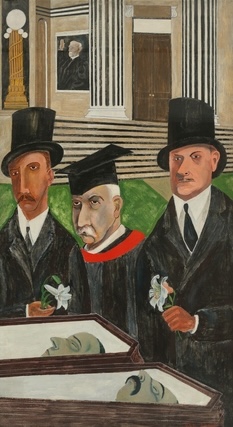 Ben Shahn, The Passion of Sacco and Vanzetti, 1932, tempera on canvas, 84 × 48 in. The Whitney Museum
Ben Shahn, The Passion of Sacco and Vanzetti, 1932, tempera on canvas, 84 × 48 in. The Whitney Museum
Who are some of your key sponsors?
Leadership funding for ‘Multiple Modernities’ has been provided by the O’Brien Art Foundation and anchor sponsorship by Heritage Auctions.
We are grateful as well for funding from CollisArt LLC, D. Wigmore Fine Art, James Dicke II, Jason Schoen, Kenneth R. Woodcock, The Steven Alan Bennett Foundation, The Louis and Lena Minkoff Foundation and anonymous donors.
We are deeply grateful for the media sponsorship provided by The Magazine ANTIQUES, and American Fine Art Magazine.
How do you hope to move the needle for the understanding of American Art with your conference?
First, by creating a deeper understanding of the modern in American Art through an awareness that modern has characterized American art since its beginnings.
Each era has its own modern – or multiple moderns – which is sometimes difficult to see given the challenges of placing ourselves in historical context.
Thomas Cole was modern in 1824. By 1862, one could argue, Frederic Church, his most prominent successor, was not. That year saw Church complete Cotopaxi, his magnificent depiction of the volcano spewing smoke and ash across a sunrise. But it also saw James McNeill Whistler’s complete Symphony in White, No. 1: The White Girl, a “radical espousal of a purely aesthetic orientation and the creation of ‘art for art's sake,’” in the words of the National Gallery.
By 1950, if not before, this work would no longer seem modern.
Nor, particularly when juxtaposed with works from the late 20th- and early 21st-centuries, would much art of the early and mid-20th century, even work once considered radical.
Next, by seeing the period, we term ‘modern’ as being longer chronologically than might reflexively be thought.
Third, by exploring the emergence of modernity in American Art and tracing the development of Modernism while avoiding conflating the modern with modernity or with Modernism.
Finally, by successfully conveying that multiple moderns exist simultaneously.
Please click or tap her to register for Initiatives in Art and Culture’s 28th American Art Conference May 9-11 in New York
{"ct":"gzOq\/DtgRqCVFj6v+7GN2HBG2dbcBokfmoTyzHC85ptnn4kqaFMRQCTkHH8J84OdqsWdw270b0Lc3m7Zl24Fhe9Q99eYhpEhgSHVRGtGQ4R8qM2NUUBfWol5ANytivS+swj7QokpfIUXGAOMU2QBbDr+U6d5G\/orfqBnzWmZh8mFIGNU0DxMW9WrYqXT4NeF1cMjpZ8KyMvby7ZlYEKg3D77mHrHMam5OwDcjRY\/zGINpPr4xc\/b\/yr\/40W+mmo6XCapQFSKu5sDPbPZklMlUqHtBJDzTLdCfNjb+VTEf0kj9\/kfAbIVTGCRvdyW+KvgR4mg9+Hlgey6tg+2NY58Wc98MiI3L678sHaWlwiq+ldF87RGz6v3SVJKV7PekhzeUQOMCib6UTNI+5b744He0mfp1EtgkIJ9ReIxYm5TWaFlQAEmVVrqaTAx9E08NflUts6RhHHv2sIWy32UIT5K0SNIzRHmREMmmIFTQPnV2Bti9weAUdJAikCr8olpuh2rgzlBVEqdjvtZMZmioJd6r9mkiXzNFyygWzIt48z7NXELpQYUInu5MXrzjAOf0O0vKEY6NNyERIg4yhazKyWNzn1yQBtsW\/AuEX4XWOnEfCNdFvGM2XhHgui9GnvHPNKB0vjlkm9x2F2rsZFW5b4GBF5HcJurMtbeM7FC3eQ22Xyd9YhdRb0BeZfGSK9xJAW0OKCPYXkyeKV38AwyaT5rG9KHUEypDkFS7fPoIRPafihlRB\/suDBxuGu+zuQkxi2w\/pL4ls5iR8LHWsebwNFSy3I8\/jlpC0+fPVyr39hh3OdAVn754vbZXKe+R22oQt9AHpeHS34jGTSqCU8o4TzkVvf1pai7ozWqNrfXY0X32pZf9yqVzciIIuyNaiM2ijGQjsxuWWabhW7DxxcBauSNXpGhJmc8ajPt9+39IreQQq8u2DZm\/n2XkDIODTMKZ4XTVxKW2HUPWT0xgynrbeLMwvkoNpMxu9XokXJNbUWnjL8WCGyqQaOgpu5nvok5XopuFG+zpqDPqLolHVpmtT3ENLaXedr9XmZ8UcoKgJm\/abhFUqlfygtLjZkboC8iL84lT6cCz13czsBy5VwMzfvIQwGrjuZYCI9kxrZuarnZrvF0lod7zifLwaIY9l3AdDVU9TGfyKSO5kY2i7jSErILztj0IGEi8DBQ1gbzqh0nT3ZqKq5\/JzegF8B9pPEuTnOYkn8fPC4XQLYpJ150\/HaSR7nSqJTc+rlopIv8BqH0AlIuuRojUKYUx0uFFLD0RvsPxgD1kwzDNLgnhiZLQRJ7GemSBmZ25xhNt0PDiiRBenMbl3CE4xZQsmDPq52VnequM1y4cJI1r4bTyP9d0Z3pYh6eWZaSYr9Cy32nQnc0u5LEz\/ncHAuJGdM7RMYCsqbKyWEiPK0L5S3swXFY2LAZnxwwnh+EzHecTq1SpdatsLTV3OXCF4rt+mbbwLZYVP8xF5nHw7VYVfj42IdHcq3yRObgEWTohAObt9RKZESCyzGlLD76Jp700Nha3BWkH1gDpo5thI9Kvdq\/EqKoTVArcK4hYIcH+1Q8kJUyrq+9p2oVzMsaIR5h5e1tXqAjk6oP9b0UWlhMIAg2zPry5ii4NHAlvYigaIXrmBVFQad8Rkq2Poe7q84qz0XG33A\/fB6NvKQXxMtS23RVCAu9zsue34CjSnckwZfPE9dDB4xj9CxtslbBXZ+CbkADEJQI2chklgp2o1cA52T6C5XEthHwGx\/XV8UvI3UOk17Tezd0sNN2TfdRmPtwquT2OOmCZNa0iBAKScCX1E8pjK689Yo0o0EghlWEXfGtVwEZe6qSRS\/KgY5g\/cwc79ZE\/iaknIbdC\/46EPCvzQt02IP1RNogOlwr3SpbuBh5HO9\/4izh2aEAe2eQ2JTeA+edy38jtwx+C7ZIwJfux3CEVzLVTOhId4vNdLVXnIoXfXByEDb0l+BCKZ5bcZ1T5HJ2yRCyxJAJ\/dysMs487aFpowUwoIsKb8wku7GyCsdGdTDn4DP36tgXgN7qFWSxuZcBikIWr\/8AIDtcwNwUDgh65\/g1Sfhsss3eT0dys+MietgpDqd4EU0T125cKJY6KClt76b7BfsH+PXH1fcvMkq6YtOC1XsmcqyKkoXlytgahtP0LvzQmGKE13zRYJt4yyTdu8dOAevNmuptQoEs1tITIpUbIsYBuzpyN\/PdOG4ZlgRv4SpkHxM7b4po5+WVvuqF4hUV6BKCfmQOdVWujE7Mysxx2D6c+BE4TcWWQweQ4QB06dyyZpfqGhL23XtSoGE8IC5zfdLubPjp2tZ+cUfPNguM8ucIjdqlgnPywz1yV20Yi\/IYCSuuCtrTZg+NkJxX4dxP7amWcyx2ZJtgdhkgMZI6COCAp2ICC\/K+i+wwY4N3x8H3spbto7dDO94ncSEprC4RkBXIt6SdmkHUpyDH+CQJtgL1763KFFahcitIkKRmO0HjJt4oOiSoHuWqGOHynZxmC\/2HUKuaBygYshQfJkJPQwPd0IuVCUrlMoizW20Mo2hYkLJ9wbIDa0154PVDpeijrtHGBwMETPbLaUApExwdLD1gocVMSscDm1pf0QGS5p7g6QXmw53MQgNVrkfd3bqKrTsP+E58a50LtZrc4ezsw0zGaH\/ImFxIPTb6LQ+\/5nGJCKybtFCGzueeSwnCa0Elw9m6PvHUM\/AJlpMwBZ9v2qS3mUEuedlqKWsLTvua\/RKuctoE6hYMNVA+rYu\/V0gcbt8oNC365u2qQzm\/R66WdbXEFMexCjxyU6GW3sOzjwBayjqP07xJ91DhjiCSqCU0oSQFb3zRUvyLgqQAJPXbwidDCnc+b2EmSVzhdZx9do89dcOeShVwu+vvJPZBdsSfpDHZSXlbBZjC5bLfRRnYOe1Ng\/NwGI7aLRkAEHmJPhZyuIry5aGywlSkMi3XOtEBEqugxlVnIt7vEgNxBjAxVZwP3PlXxUDNk24IFWcK9rczWt2rUe5VUpEV8Z33X\/rSZetWB3bxgeht+\/cbRVo9yvUevxK4cybjsRPwSQOukuC0CUyV4+BBHsREx\/3u61Kkh9dErpuU0BNF7ZHfHOZsb04Pzrap0zAfXMIK+niO\/uj1qZvk3Kd9SY76nRiRskXBEgwvaxZfxbMNyrpy45QeafbF0RWaTFwztmwJRNx9jT94\/SFoY18HNX+nAzEojCeyP56Kqeplcv7rSX8Xa\/VePy\/T3qSBpdGTHE5DHhGw56vwkjCdkJCQU7Xhd2Wez+T8QGZC+YZIMZ4aJwN+Z\/QsQOQy4kvQdAkZaMhtTmNGkUvS+RkIlmJmzDNrmza1ec6gFItfbw353AHDSxR9cF555TO9TpS6WMhl5tU6EDW2e5xmowuDFVUYREyaG+lQvlZo3hTKtynyTbqIKg1wSmpOtVAYpZv4YgIfURbhSX7qVlMgcy3Mjf+ojseMutYV0xgNmdgmj0pOcwSDIl4qz9LGPoAhEQsT2iz48w+ZqaQ\/JZcohRUd1IPr+fToa45iylRe7nPTb3ZpDYtRwgq6fxFtiy7PPcaRq1QDvtLUcKgZZoI6wDkPosBhAhe0Aac3FXKovDeqNs+5NP+V\/0EAF2ddTcGJzOXYIWZ8mLNgO01vwvqhZ4iUXaIFMaFG3Cynluo+veeT5914sHlBdOeKbO0AxPIbmCyzmWaj0T\/y1N6pf+Ctsg1gfAv\/iHvKDCeI68J1Sl2uCxqPXOyoB827g1LZlXmyBlxX2yj6c3s85J4JDsibDNbPbatwZYWkvKfMHjSolaG3Iq08gG59xtpAMJEINmDbELN4Jg1Aj9gomlGvKjpc+y0r0AuPDbdAFuAwPYFpcw4vIzycgmuv\/ZoOkr2gU9hsYs0meF+d9iusUaGaE70MuGQ0CXldFdXqJ+J+GFSa4wHw5n33jMLOiUhzUzYv9xG7FF5hsit7GB6POEhqVSZwKTVBBxi3rbMU\/qPnsoDJHDj44CJVNVlNfvFmWmlrPnDdJT7o8uieoZrj9h5HSO5osFTkVjwDhQ9qNegRgzP28nX1slUarXhqE+RUudd1bkgRY0dSf7R2XSyog8GzNuwA\/+pFfNLECiyBU+gxmB13Ju2LKr50yGUbCp\/W8U1518aUec\/VOCkp\/UrKYmLP0LNbNrecZhDX2KcjjU7pL3UIISpe++Q77icXhOZIsbYy3cAhCoblGRVvYxTYubuitsjiipHQItLUR3ggkydAzXiax4LGRcuIJatt2M8UBViDhdDiL4simXxhI7DeStHFzUo6Nc03KM\/HFE45SUmquZCFkXofkCPusV6O7rN\/QUMFp0Kq4iGwFzuknv7IL8tpZhfSW8xlsQfu4I0jfLr6a8XbaDN22pB18zINRdoE7gcpg5UDf+2mPbbPn1d7wstvk69XsRbYqs+8UOXw7h5NNoLVU31UZfwZLosSAEe0zDYSF+o0MRlTdKwDoJfi3zGeKUOqIrHDwZCoWGCdcTpVwZg1BBUu0lK6qKDiEfa0tQc8OBiy2atCdzz7d+k5BAdjzzN\/feZ7j6mTVadkWAemn3u10aJmgDSRQZwxW+yxkI\/v7XZ1t9dYJrrxHTWlZANXgdwVOdV5lBpQij78DDLMC9wsGFHLhO0WFDHyHzNNJXaXBAXNLIZK6lT3llsN8ozPxQAyl7Q6v5xyFWBrvRkWKdoysNnWot3dZAq4ehuNKs+7CqPXKnIn2+mHiDriO+6bRWUDfIUMrWJ7Q5Ar\/ZhXOazstT2cUhI86YaqRJAfV8uD7WXqgARDnfnyIRTjceArBbPUqLwgt+LWV7tqyoPHXY24XNicNKjxvy8TpiN0VYV5U3yaI5jDEbQ+RdrUC4MkiebQPpK0COidGbvBRWW\/ZIuPBIvJXk+ELLJ05qD94SS9qhnrauMu7k7fnigLfqcoZgYJ+3tM3Tv0OZMPCeXHW27xSv6TUXn7+gMs2bDUIVdbpP8p5W1uEEjhASNoYRAq+Lr+2GRpkUtJyyOVYmK+wKd4a\/UWMEGTKYnGyW9jvXldu39LQ4tQ6SeD7RPEzVsWmOPuYJF3YCF5bNEMJCaFR6vSlfXCvXLOF6Vjg+yu2iqTIhXgjSzUpN0YXRkH35chE42Xm7dt6S7f\/F8Icdgid6bdCS086eUPuR7HdmoYuOEEQbR2w9c1Sj60lzK7uNt03W5VA7NO2y3Q8n90GLKzuaurOrIczYaoyfOeeKhJyMqVhgXb+pEnU38U2tXj+yfMvS8ogmbatbJOIQqsrNLPxjEGcXNkI69DBY3Uo\/JKlF6UpzHEa7V4nnUXc51kXNVp45ACABkQX0wXOS6hBeAiihwTbwuBKADl\/zUMz\/zZ9XB8cJ+Mi7eDkQzqIOjoQe4zwTR0+4dVvNVLhgPXXD4cVbEE8F0tXbAEyfLYODDAgfSUNZpsf4reVzxv30Mosk+u5YbIqRRjnKMk8zf1k1IBtzBg2cYP3rDM1k8ib21m\/iK+6E7VMD+BxKWhiXpXwPbJBSkM0THpvWkz6Zcltcj8uxxZ\/NaBN9lIBhJnr\/qrCbr1ZC7aCyw\/SxS3F+lNAIKZKA7wDG6SuksehJeaF4z4zRaGN2MOVSG1XJEtwh0hjFciCsjdH1jbFttKxpoe+JOyRRxM6f\/eGfGww83jr3lk7GgWLcRVvBiIFzYe61wr6Ou7xJSshCvHSHXr41pUs6HbNCVdFImEfyb8w0Rqu4F1XfiFCpq2B\/ew8cUxMi72bhHjok88wIISHZ6apIAgj9rB6OkTcKl8nK2MHsP3gKgroXrpFJJo7h66nhWILb4nRIPQPnzJBSIq+jPACYTBx6bUWeGmVRx5gOiASF2XOBQrkCjqIwlhJhTG0UN4OwdQq0w7jt461o2S2kvVp2pQYOfpgU2C7sqYtmitkLIDHKGRRzoVSABlG43Pc4IXqkpDIJ\/vZkEly7ZZ\/9BdJxBc7Ro1K8DA637geiFKUNL7BxGB71ZJKKlfU66vKXm3GwEcpizlZTyn+4Ub8g0DbeixdaDvhBlq2u3dYk3WdfTgA7RKwp0HDlTV5u8j6qDJBuF4K9Kz8jJM4LsbQiOHIGMprSbWq76iwWvxdLv1OSSy3x4wdJr939Fw3T5CyWR3OGdQgBotF9oQROele8BA\/SlUPHx7N5GwFK7b27WJglHlBUqNtU6ITExSsPUmQmdtiWChhC6fJw7cNFR0WIB6FE8mTCZdtJ\/yJcDQRslYrkIs\/cT4A\/906u8VTv4gQWh2euEPv4Cl3\/PiJg\/wiiRIRpWEyOCDJKUXrKbmKSE9g61q8KEYquvp+KRs2TDc7CklAjy3M6TAxg3c7o00O9p5oo2WgiGuS5YZjGoFUG\/H+WAKaS5KJqYuF1VPuieuWFnYCxV73pzpwhOfp+ZeLsO2fHsxezBIR1hW3qy1H0ZXuAJOKfeBHxUUw2NOgw1L5kP6sqyVqx0k+JLnwF4jnLG8wVIrgL4eced++i3bHHii5aO\/1L6TiV01OE4YuFOsnuaWRApaRqkdIZWtxHjd3r0wYEFWmxSaR6pdGpAE+QT\/AYRysGKOGEiRwcjAgcipCUHkCSq7\/9rsECt5p8RKrAgHDa83o9kE40+t5b9uSoAAwkt3sOBF4G1C\/fA5fNiUy9WKBFsZrzSt\/lTRZu8rkcyxjKBg+a\/1wjlP318Y1\/y9Ih7ZtrW0DRQJte6U6bZ8i33HuE\/wZ1\/Laxwb2oLqIbPCF7uShV7e1gDn9Y7LnmweMMmFbvkluWTvU45BqYi0VCP2DeusTpBbHBAvXGy3HnCqaqip0UnhCA8m7FFgVGt1J7mOHBWXr1v53X1EXyZjRuLVZyaTC6JkUA3B0EGEG\/7Jg8fhDjxa0WHg2+srW0zoitMHg4xbvp0JHQCgXTqHUbani3uZuxLLT3vKkxMiiTwKwE53TCqZDwrA237fM1YnvvMFz9KsV3O0l8bAp0vqhdgr0tAO+m5bXUKteH1KECvEl50P3TTk87DV8Cr4oI\/WLO+TSKaS4LJm7W0fVCNg1SWbq2q7hlQT3eqlor8FhdxLp0fVm88QVH4kQftwBI6Mz1uKG3ROdhmnuwFyBSwBm8rJ7\/7Sb0iPRyrCQzESLMZdaahEHgNaE17WsGAauoYrFUXlaGkIzvnjVhF\/B+qulpEag\/\/gKQqYulQGa2k2EfH5veJYlUjY7QVOnbcVdwK6+xzabrzvyJqfwEp7FcffKCbjenOb4+8OQzNJkowmG0O8p5TnjCO4WGZUZr3PqjsEiHtaojFIRkvFafzoa4rRMpt7L4kQ8BmoSqGBeqVICbrv5pogbQsrH9tpGXS0M+dRCsETj+ndzZu7wW5dgBIKRgn0W56VJWnNE+ZuEeH6JNG0Xtwc7vCT+NP+2IFbXepdlX86\/LdMtQj8lmHnLBiECm7QIu0AmRhQhV0VVxeW8IhHuJP6VbQU96MWXL6zZJiuHBh\/cwonPfawUU1A+wktuPW046fwOKz1g7Ern5y6pl0menAgIir7dD5MpHS20AOtNjI4uBGLTX+X1JEpXa\/it2xKn+KnBkOKnakVexb895SFjGt0NuLp2PENu5hi7BSyTEHGUzem5ofcxjwCBrPu146KZG1d6IM3Y146YuAceEs9o307jZXCej7OcF+dhG9wVBO17f1n3thvjWeQv4R+wKX8wWGNFrLa9zVn\/TAaMceo8zYJMQMl7ub3OkVyVFN+FumiBUGQ2nj\/mfAFD7VxEFNDDpr0MhDPYekG1DaFbEexxJqKkhHFBGH3JTZ4azZ4kIcvqtDAcqAaTSAj5JzZ2iX9Iro0YXDSh7h6x+z6k42pj0k\/U21+N7NmKePoWQ9IMY9GJ42rzfC7qxU9R1kjsVOQ84s\/p\/54gQkBB\/ax5QrVwXnNGh+bYmwbM+sb+BHsX6jEA8YR2Ebh73+NRMJOx521ySpeSxzVr8JwTFryz92o\/cu8MYt7rCP4S1FOjpWQtBOY3XS39VYOMr0XdsoYpv7wQjObhGvM2LuJTTXa38YdP\/5T\/ynq2VPqILpf\/VNkjrr\/mJpLrjr89o1G6G3vPsW4NDl1DwRKtraL8m156nrfkcnBPpvVmu2MJstb52MtAr+E5UTKTCS3gqc+EeT2zmoIFgxqqD9g\/FkfH5a\/N9a4xeY+y+Bg1rmXXc1Rwinn+MBU4mRuVMGOjvscbEShQpMVixkcRsOK2hrv9l7DCo\/dcq1HeDP7W46Jk1zIB\/u51tWm5rI5VOGzevyirABWwunETMVCsS9MD4M7DOwvSUJEqnpSYrWqJg2QyygtUkSwc1K8ZmGdT8HQxa8ff\/ofOoftKItAGi5roEPJMmLbBrR8f0jrJYiMojopzqxmw6wpaUQXSLlcPPyEfkg6ddLjcRRE7xc+HQ849It9me3e0dR+3oADFlQoeZxRTwa2iMz9Kvy76AkaPKi5WA3dFfjZ5rbiRViqd\/p8XOZvLlt4hICvwicufmD8s9Rt9eaSTN2cX0uq9mvzYI+FZNfYCCpWiBUrx1svyb1LYI8qf\/BGkOpcmL4dM7X9Lv10i6ppY81sBlh30\/RnGpyPoLMrvEZvwIfNg9bSIplkATXh2mO+gI32RK4noox4c+IXl8zErLd4LWqX+lyIe502rALF\/aLlziMh3XqiktkUOwkPWlxFSHZuaPf6VMGE7wzy7XoFZ+Xl0kAx5n2y1nvrAyyIbNwpgdhcQ8cuMlZpSWMWGIPGa92zBGeVIyeRSs5D4+LZq2+f4xR9nyT7nkz7awQtshIkP7AEOnb9VilXMbExWFn\/BBTI192AK2V2s7a0N2nazRABl9DglkPgh36wY\/pq7xE14ghn1rpJZU1al5Uj\/CyCJn8s1\/sa9ckK\/\/J246FW07dtUWgPfX9Mpaj44ne7GuhgXIDEGsZUl2OGfq9omiFKp3PTyfhxNc1A+dpzd4+cLPklHLOzX4DmQrDCz8EU3bUSSCeFHSqzaeREP7DbJXQMq2soCqATX4WtI39\/f+CcjUMgC2+kC4BzMJ3x1C++EUeZseypDYYgI94hM7Ss\/9MeZVaFwRJiNINi64UBPWfpqC\/oeLVi0G7sMfgI68Rh5zGpoha1\/9SOFm6LZv6pMr0jcbkGuGBQGx\/jLu02RDUtg\/9E0RcpbwP8yvLl\/j9tH\/FiZkbh4J8goom3a9iK\/O0x5oBNIH8U2Lja67Q352lL8kNlYjHfiElLGg92iIFLxu9TfakAJBgXQcmr9DxcQITjHebs4LmfIhitGtQJsQR1dYT32S7scPG6btdBgWDgSc5VetTbT1C0g5KTQVJ4oMevpP0fy5vb6sfIP61ASWGfCXy6ZJOzoGeV1gbwZAumT+L+DDMhsStLySwpmuEKEIAgGc5znrxJbwdkn49J19n30\/JhBfeDlrucch5CM6HEHf1HruTo7tmUjHfJllz8TYdHtl3\/zB9JiKQ15OoKPI8OvfxZxf3GjmmeE7DxILqMYiWIXrMTEPu8G8IGpKm3kHZnGtQhrSp+zsq6aqDmOctA7EhwpwO4izRwu15pst1DbK3VYUV7Y9GCpl8nF6iygu7O860GTR0jvRgQ4hC0Nvhz2C5iTkRQmOj267JpoL4nZdnCGc0HY1D92p5BKQfG68QWKgnK3klccpPcVB8YDtJgYDtfD3I+MRtwhtUDS4NcVFlpWEHBbTk00jOCnJFlb6X7sJKEPB3wrvRmzetXr3xWR86LambSI\/wkCJTJNjaQMj+O0kjCEvU500otDKFhlB6KLbtGGmvrPW7RcFwiYetQaChqlVHb3rXDVInHrJDicA3GLENHnHLyOX3RMsawW3Fx\/rPrsXQ7IqkSAvIn8ywvNur1oOk76g5wc8P9aAVM0TWhnTdvmZ39K7z90Fss71k+j2qCblSvgXcMaq\/ubzgdTDOPHR30q58eshbYhJ55WTzFpeoH1st0fo6oSF8SgQRBCcaOT+5o1XScoGuaQKfEKVYPdopEOSYqb+vt7BpUzOo7vhEznId\/WeUhWHGtiP1+Hd+wk+g6q5j5ruxuCPNbbDcFdueejNh+wu37Bxps9ubqIlhra0Wo5sm\/Cq6ymvjjuQ0OVn5br0QO+JB4XvOyIffK1rhw8A5rqGEBT4B6TjVBKvgtfg6fE8GMuU0O4MkQLDnheS6ElMMXhGECzUIo1F+XTsbAqC4cjHJDKmg3fx\/kVdyertcUwIaMDgHl9abekY6je0Ggui5t2Tu9PSuhig6I5kcnMbzyp34Fsgmdi\/GoAOA2QBACtt1btZSRMljiwWTLeX6CjnIJCFz5HD4ZKoXImziAcMmLPO8ane\/53bmiZvh19rpwuhs0xaAuGw1yDtHgZbCDNgYvObgWW1rYuq62S1aqhDBjSIGLtrAUVb6rlh\/56pISqj5w7vUoo7VWKJvAxNtMo84HAkjFWQuZ\/PgnMhzoY9FJR\/8+dOrBq3ZbPdc2gyFknmdx7OBK3EMo0xWFT6xVfRRlIeFEH5vmTidV0J0QhoAMcgn2qpRXK8AaFPJajjosUIPIQ4Zil3QTjMFqNKd6jezTH2n2PMe8sH0M6zSKfjZYJsY+h5J+KJc9P5q4mnrHpygkOQrOCn9EkYemBWZGOWL\/UuKsCJhgCgvrDCmmDDPHru1AREm2ciF\/Z1HUOULffLHYHGa11yzKRB07VbTapjKpAou6weLl5ehqLbZdQFi1KLjpdACJhanBmzYEWqQBdeSyLvNnsFEcgsYxLaf+jnm4VpLFrAJp\/orwbvulYZM5y\/c3hz285Nbi6bpqVtLKQ6lbYP1eBj4qLfUelXIbd48mnNIruYM8f72H1BKdkTa3z5WZQ9vCY1HIShXROCT6riCofRECTMyI9ALMytN\/EqMUes+a321wLfh+3h8EHCGi2SoMGKz3eDo3lAoMizGKfPGXReKLmaJsdQTTpl9LyBENzEE4BY08sxL3hXzMwQRNO5+UNT1Hpti+cZ4rfFb1bh2e7+tCcZi2kS2UrKIZVj3jI\/fXTjETDWc7iNQhq45dfpWHvUFThjfTltNKQlF1AuKXyvWH1wIvzvl+DMKjeGCShJ533XoAM+kB4tT9ANzCSKeTXfgkmHYyO1de71hK\/NbbkB7CYtSKUAFXGd3Cv2wLxc+NSOkqJtfSfW0UvbJYgHj2\/aT2PF3qfi1YzN5rxhz\/vZ\/4itohwZZfAKxAsul88o9XZW72m4LXJyrvRrKRT2WrJWlJqL44S75wCxiky6CjQnUCkCPFS4ZynmPwoNbfQ4Pi9ApR4\/bk\/hrk5+vUios2DOjwvvtYlOlsLCXa5ZqMjiXpgQf\/ULmzooBDsvzeDkDPX86Y9X6N2E+4VLXX\/ycCCjXoov\/ERCQH8emi3DTYLB27XMWKR1PRZJ8OMiZavruSrqroaocLrU4sMFa9HjGoXys+U4ks2v8xRGX61QnPipfU99BrOu8u4YkN\/FKS+qvWLMet9YbNWFmyn7UoyVEJawEF1\/0K586ncuJtFcLulyC2q\/UrirE8LiQs1TqVhYT3eG\/UbrhSimZzMH+ss\/DDHX9i0wBCK1Mg7I08vl2JqvSsGh0Wk9fy2h9LYZ803ZuXWYZpFKolL17LEDJBLWF8+ap5CG5XSMaGU9ctyaREuVXm+RPzd5ayPkJUl1FTh8lFqkrWAvmdRDD69zu\/Iybd9loXdrSV\/xjTxVB4BaX9P6ym4PikbBwgMQx+UQ1NKW+G7zUhxPtSp6bHovcd7Qbb23g0T95wTlypgtZPZ\/XNAMcxgapobt3gibgpV85hPjNdB8gLeQ66Omeq9Jvy2v\/7CM5siYRs3nmxOTZEFzCDPiQU4HPGn6DhotamiVeBsgZJbXtxlOriyOZd6iX+zO+zpYNIHLC7ret\/RyLOioiP5I4ZJli8pIVBEvU4D619yzdg3eKNl3mnkJEJPHqLq1g43MmG8wXPyGdU1vLvQXb9H9qis7Z05zKDPkJn1c6KCMWe8gfkiDr77yjMvYi6DFEqy9x\/Drb12Gu8H4GqqwtoK34sgx3mOEJFeRYg9l3dm+fu3yET\/kR6PPKUntUbj2rGhRDhLJWf6Yziloa1+LKdVQ+NyraaDtY3M7nHbM9VDfC3+MP4z7tkaFZUa2X4fubz8mnSsfBBzp7ugS47xzxB8\/P+IXWgGd48wFCs3dMIT92tNYByprle+GSi5t5SLdArvvpxo5\/Jf7iDwlBHp6v9rPApaAkMgwf\/57rsbhkArZrUCyycudleXALzTkqOnmUPH\/3o\/Yt18AkHIS9crNadkkUMnxsy\/9VxW6hkDjF+ggjY9TqhUaVoAuA6OWhQMBgyOsCOnE9L1\/2Upl58Xwu0i7V4aGlq5GhI1hxxwnfY3j+OSS0PlQQfJmfZFEcjJNDYSgjGjCgBwF\/CyZHcXB9YCu\/+nbyHTV2fE\/oMn9mdho8W9nhDZP9IMRzAGB10I8upzMAbXkAkToEXyslGlrUy7Cub5olYi0IQn+cM1R+JowNr7Yh+o\/fXoNKvOsl1AUDQkcHdJ\/noRJniX4liL4Gz5YwM7jj7aJFdjJ2z3GCc26YWqTPy8YSOh5+DNW1YN7q8SDSDverS49pUUiInczgRn74toofOBowGuFFFwZYWW+Ry6z0qgSFM99hDxThxTTUwXAtekwaZ5e7yOvMnDj8GCqlireonoWDS8KVxzj9N8AT+LN58GSb3aKWU3ufvKhxO8ctqUleoxxERzOSZfvnyuOGR9+hEwkUa+xbCWQjR0oa2dFQOBgDYLV3Ry\/RYaiZmCUbUeDORsZqc02knb30AzTYcz8Uxd64NjRF6B5M6LwzTpOeaWV2F0ZJ6dQ5tIqasI9JcZoltcuolod1bF8tAAJzd7e5sweCQ6D0dv4CRkVdafNGvQXkPOO3F5OKuoco4voJXZqy7Fb6LRQLbGbpSqYY9iKfFPlisvTbdpiLtZUhSsYeXnyzZt7kirgxb8nVuCRPwlVt7VzITGWJkMgxjZjhH0AFDkMRLQ3aLUWbcgfy2okPyIvJGhc6m7ZBkbVeCAGT10TEL7GUZz1Cm5lqGfR+qxjolQWWCf5sKUsKj3U2TNB7hKmiJ4FB7hZ6P4d00hT0aI5zxpaXo6h2xg7FBo0lmtk5CE5EXIeq3e+sv6BhmfRoBOdj2GYfbBxEm46z4kUDbtG7AnpjB8R5btfM8BrZjWPQiMRGv9iHTl\/1eFIWDO74oJ\/MlXt+FCE3qqRJIu8wqWfC\/XDHJzElrb8PVjNKKzmCr3k4aD3N\/1Q75wxVDwEeO\/4ErB7ywUgZ4JdR7Kup9Sm3wpAEXq6\/kI76YxOEQZ3UuDVpZbp5CNtjjkQLWXoG9SqVwyEg5t+aGp16jqqR98Iynp8ykJ6ytcZPFvpMqIJSm8HyOWqKq2CPuGRQOtyrMDYQ+rnAroaVfC9lHhRZDvEHe6CbY8AjMqhiPFWg5yp1XWfGHFfQr4+0rzgJS0CRvw7roMa+L6Btlfin\/GA2OgRuEWr7kJuCZLR+83tnFwtp9w3g3LJOLcPaqSW4y+1gKwASg98uXZuuGjILG1V8ceQgpq2Pswby8n+trhBbMPaeTQwngZ0sweZ+5BziYAaOHlqt7QVjYofCfFm+V1TWjTl8gZF5lApUxpM\/ndn\/6I54nplfVQxjvFmEx1cLuNscOegI1P6lLJgVZCJZmZYClt1Fw+Az9qpWBlvdVr0+GfMNg\/O8xa+GMv+bUXJhFW6+Qb8+IWrvt3RE5pc6VQ5J8yARuR7utx90R+bviCQQEL8O6Jh3XLC7dH5qXW2Nblsmrx5OyRRVXZoA5IjKl84oM\/JyVnF4KFx2CXAihYze82B4EXYpxzOJBmzM0YGDyk9cLz\/8VtHCIl4ZEuEmy6JaA6UwJUK2c8vTNaCpKLEMEcfJCfq9PCIvWX1erPLrlSkQ2UgEPHKyMBBcBfj1v5XKENIAjJRy6TQv4w86TUrJxS5ZSv89lA2HicbdJA0hlkGFIgF2KRHhghFusK3yS1JyzQqGDxqU2KYh\/OnPNWjxmxAhCnLcncNQ3y8vD\/jWliBOI8r58a7DG4CPh\/9XNUYUQUJXzy7wtkWUuqBWAdGM\/HY2E\/BxVV\/DdvKBcNvKgyP9FSEkCJCF6nQYndME6DwjEcKU0yS74+RtgSYAX0hS7N\/XY6l1xs1HVBQh\/LFWu5+dRDtKvK2mqrKV37jV84llN4LGbvi7idxWPXx5xksxEsjXIPXmAQKJ4\/sp+f7f2YEwiqW8KqXSYs1WO2VyQque2bUbiVescnFnHCedJQfNtkHdEiubrx0no\/yCbHCPSQjttlbIqCLK24onrCF2BWZ0ulnpElDevU1EHzuCgfd2cyL4bya\/FGFGzrjyHuWKg5oAAnxNmY7Kt8rZkYUbaqqWFuBfV0s8zBlXqPOWQh3y4mbX0KIb5EMmKKRL5DdW5niD72VS5rsFid+ff9pFnh2TxfeKJPWZWcC0R2bEgT1dxxaPeKAYvbSbqa98NMKaD8etAXf6leBc63+hCZ4zIqZlCtgcebnwaQfp1fJngjrFtDzKX4N519oOYZPHYBz8kBt44p77YTHvs1u9lsYtJjhmMVeSSx\/sy1492xju5oq4BhRCCKgk5kvHqfVMg\/hbYItlYGUke0J8CBvnCVnqpW\/JxDkAAkplcb0BQElZCmoHoRF+is60ydUCxy046B8kC6oKA4WSyw\/VtOwgZQ5Rps3b4tS1SKjahbpknWIuAVDX2SDkpHp5dT0681BxVpDqrwCk\/mWcpucB6vJx95nVFegbpYL4x+h0udZgnpMTuQK5Tmfx59uRGEZVhYlQXFIetYa3FHCPLe134xwcABQKcdDO6i3mJSIaQjTddmWa6eN4+9TrOsacmX01z2y230QMZ86T5r0flVmz+ZfT\/gt9rAZas4CALTZQ7P\/vpC9uc0aDk8ZNHbFm+KV3PJN6j3rRA22FVkC9Q2Yf47zR0IUcMWi5SZ7puKy0mdWbYx4AVdYJ\/Szcx6XNJdZ09XRosG57V\/fOIdYomjJ5+4AVY38RdFY4uCBMnMN4v6pW6qKQHpy1FqzQgk98y5clX7yN988FcaVpZrTOgf3bfH6GTOh+CjkN1w5atQFqNPcjIYLfv0y++HNBXsDOfjkZ8XpEjHjLqY0zifnjRMZJu7tMwaI7JNH6seoJfyB66IzdRojVl2XeMeVVTqtJ39cacmsEzGpqD6nxMRjHzRyibJwzoevwFltdCeYHT1O0D08FOzHF8g5kqttXHB4iHNbqao05l6jKEiSuVTsRf6L\/DgA\/9bzkLDtE32D+itAFVeCY41knn4kmJKezsDVfh+T0FFZSKdF1YembQbr0Z4UPsiTAiZJvisGefyrolOtDvmHnCIgx+9Dwf5XOPfGz7bnDTzkfZAsgn\/6yEGbSZD4elFyzg8fWbXl4SQ737wkqBcocRkHWiq\/E3d7xcoPHmVV\/uPmQnqdKjX+r+LR4vcIZ5vMF2lv5Q5ZQIWOX\/CtLHSNHOEAJxRwPoJVSX9Obw4ZsVBNMQVg4DgwBV8dWVlcHktU7PbcbyVuRBHZwLyPFJypbydkba5HuPpwQPRpSV30v7JJWGui1fpVcfBterm66rKI6BKM5k0A4wZi44EVzhIOzDmUoaVCAssohG4NVebWgIXoFjHkg7abIGH5JHz1MNfUX7eboQ4zgqwF62JJ7sWl56I1N1gjqNC2LaGjTs2Fu\/Uv0F\/ICQQksslLSr8OXgRNvjXvybOz1\/A674jkRN7O0iPfz43j4ijIjtouJSSwsUP2HnrDUnbF96+uZEWZSABlfNytus\/7hCQlPUBADuMv\/jbbHXbzW\/CfrznkjG5+Ap+Y4dvb54PIUQwyZ9dsPGbujcVqTW+pFz0NJpdb130fQ\/EI5UnraEHLgYr8QAVzzp0kdYzp4oLekrqDAQylXE7I8hNOdYpu+VCPLj55KQfi+dGOTIy\/i6JDCgNVu8mCLREBzeNgLkejETLmbmpfr8d1aS6xtdvEg1AINVzdR\/GRr1sfsivs5VRRHXzM+4+JONpusa7hC+\/q7N\/t5ep9K+UM8kq3lSp0sh5G9XgaXH3Oqcd4oAnSPR93bLcD5uxtPD5POfF\/hY6PrsTNdh1zQesTMQuEVa+FS4yUjlzC4Q2CA\/UUpc0GIb7TTDjD92o4O5qdcjEzdcVy3QosdcbdSQxePhWa5xKrzEtX8h2+RVZKhkbSNkowoCelm5811dJM75cejBdZ7XepYeFg8OMRSbq+Ir9XVdZQZ\/GioQosTWkty5ALT1p63q2uQpU63ee5iJ2xHDgfn8yltpJ5UcTbvzzjcuIS+QOuNkHyaIf2lJu4Mth8DjN9hnwCwq6zfH9v8DU8CZieiyvG8tzbq7m8Ise3NcHN7ZbhsPvWClpx0vNQ8SoHZx3knlaRU6\/Pe1fIxP\/44aa29cpy+CaHAP0puxXiLDW2el54wBdcTz22eZb5OvrEe7twuGSUKvO+6z1tT11O+OAYgKJz41I6atqnB2g\/ONnjhtBDQbUIDEjX+KCgWU0ng9vQb7Mtdlg6j+oiXBhdBOfA5+WCSm0Y4nApv\/DyuJEHl0qeWTOoVW87fnwob81FvpZuAE\/pGDz7U9fXesENnasDymTDeIP5EISyOrCFk9iE2T48l00yNFfm3fC88Br0IM6zhzz3w90CaIzkxNkKfy4pQCOXaJ9nq1cdWGVuaumJvhtnS99jeT7AsxjmycBKMn\/NZLSh0nO\/XZGRLobfU7O1+ykG4yWKACO7\/0ZRqR\/i44OfBbVYtsxP\/pI+FJoqB5CiySeXjPoe4BLxfBVhNlJBHhWGfRWG3gksQZujV+HCdQB0bAIY4mz\/sJ3IpVOeDgOtdEnn9rrh++fvsW9zA7KdzwKgMOBuY8icObQu93DcpFk\/4veMlbl2uOaNGfQfFbRr3jec42sksKao5tRsfVbujZ6hlAPhIuUxDVQUlwoSua8lx6O3sdhTd2ap4opayv9iSw0eUdO1BNle8timRmnAE2Fr\/TrRHq3ZGTl4ZcBhoy\/3IHOIrT\/kXqKmcKItLrza1dllXb15Yx51efnB\/EPWhrE5PX9pzUAWWOvDr5nAoS+cXMHssW6S1NwATMH9VTXrztp1StBNFtxB6KQ9Vl9E1iueyDo35sZg8Bmb5h4xb2MI6Igp4FxTyuC2JdX2UKhqwT+IuJas63MGrpwUZpinjrF576zr2cGl\/o9zTqR5BlwTOlgvCXHPx7U62kHszSMdu1Lnz2X4u8J2y3y5MC7yUh8V03y9gH5oBLiWuyt4TNb2D+GDagalfucSIzkkx7zA6qSMmclxMWYhk8q5nLmAdxJdaxOJDeP1xreNZ3p9KrGKtXqRj7zZ7L5oCg\/L4Q5ttC3qrExkLtSe3\/iWC1B\/NrM9tCkYEtm2jaWx4DC3vx2x\/27DhVPjFj3iwS4fNc\/0p88nLGMR3fCTTVaRXyIoZZacSfOR+myxM4wjER2pr\/pZ0z7pLSnJHBE\/J9fVyALH8H1jR9VpQC5RJ+OATzn6uoaH7AfQrDX2xbfrJuFZvZNI6l4FCiDdY4+1PVLpS\/XdObT\/vGbxOwQGyAcaa4mZjoJpmATZE5Kznp6mFqSJI2SdON7sJsXaESWjRr6JEskXpMxZUWMRgwfDlIP\/L3fzAOHxO1yU1SxQJi34Bd4dgi0U53rDzcIba+7hwBpLr4gf36X4v5+f17tq5SCzhVRT85+2+kWtLtnuG51\/pDzZbpBLOcxSem9re63yIT7h35N+P6EceFq3B972t2oeND7K5hL8trOjbZUpYowEaOF++Cb5Vweyv2zVCeZqks07n75D6VfwfI3yBC13fS0XBhsh0MPLaiBm3z1NyYj2X8kbKg8RxLZ6aEbPF4ns0X9ONoIdksR4YUDsV+sB4vaGwTxKnFIb8sug9BIfxk\/hxBeNaLIFT80Y+qEEcHdOwyVy9merzxGsJceCoKE5K5Uz+1DKbzDpBWOwnMOViUOdzkDYVsm\/\/Knqg6G9pW8+9vJgvqVV9rL3fINSPthpy+sKHbPAtKFENlwKVtYGyhvBCgYUR39qQ51UaJuEGRAJxqZ65u8\/CbmJkdw8ONbQam25++4Yy5g0mNMWcKRiz6fYB9XaEA7\/1bHIawpAcMxHEaEO2cdh1Hdvn\/TbZfrIZyOTvsbBh1u5wWNSqI+2cxvd7soN3akqgP58BdQofyByHTrgNqJOII\/aoHDrnyFc+0+ciVgXmdF0Eg0F40a3ppoGnfWSYxeyZkAOBXXNPlVFns03zcAfqaT1yILs40CKx6kjpOBGEIPX4JAjv9vg+BWkG7e4phRzLS07jMG96ul+5NNBHbuFktbfOP1Dbx4SmxowwVpVmUCYEnVlm4dxkFCeQ2KTwpFVdqXa5bqTlNU1V4ziZNPKBk5RbzLVoppWTvLS\/GPwo2S7OotUzAQDBKJgv3Ek59uA8U8A+7csFUJ7a2ewKd7txh3qI7OmW+j1pNXUapr9YUcjff98hIeIcTSNFu8dfd\/dP3ubidcj4DNSafnsZmWjy\/veXpKr+msvO6aNFzD\/K0GVfgp+jWnrjgFfX76kDkXB1qaxhB1ZOByLegrnp0t9V7G\/uTCEQtFto29BDqTzkNCrH57QHjFWoUTL41jz4AlmYCcC3fsl6MKtEVV3yEhCjkCYOydOZ42+t05ud2x9nwNhIDLCV0fYc9cbRoat7dc4hDbENY\/JqtP6\/j5I7ywd5kS48aERM0jRj2vMSxYq4VqhXmxPWgloejuPMH0HdXliBeMIK7qqEB7lQT\/nHAKbvH5U52ATtd3i12FUX572nWYlxViDwcW7S7uEAHNPeuYy2wQ0T5lGxKPQOkOzC+tt8Wqg\/HbCqaRuw63Ks9sXrKq2qy4riyz\/ExLo4kwhBQBW1jbqgWKyiN2bUKjkbpIvCd7sTchje4ylrRF9LQRd\/FgReb76BzO3AewsjAkCd3ce\/PQlSAKfVKpVlnnOyDjJDXtiEXS2RLrZywPsDVICc+Mhb0nl9KUwHEyanotMukJqN38TNPyXfH46IHA3tMVLTauTPFXLBomaxXCK+qGf9TsOzseCGvhT4NpHzM7stp7Li\/pUMxvx7iGEuX5P63svUIzoxJbLr1s9KkJZy0ia1UJIQ1+a4gUMv1yJ7Aq4ZUXYHRl5lcR939\/RXDjavnZv+JhNZ2Ymo4v3ts5Emktlwonu4jN88BP3EdlxLBl1B3N0234dBfXOx4SGsKl8dqniJsSepkUfVX+aoumokTRrcqAPc9dOCrqoJs\/zWPSs5X3c9mIRX37r1Ra8Ys0cV0walGeApIaI+a44MwottEYNBmlhVDxPfU4NPipPiol1WfL3f0VdmhvY4IeEJi9iRbcd6o4aqcLmVZ4qQHG00dE5uWG7B1Xj3zDZRmaE0b\/td57Xs+FyH1+xI1w3P7qwJ6j5nPSDVGSO4HZqAvFefe0Cy\/JeGYAwl3N1k\/alZlNq4JZC1Yk3j2Aj8w9+Kgd89pFRvnedRLTNaAf79jcRJU1sbF7ruG5HlBmllwmJFgGMohxYConWQCOwgFDEI8oP7xktqoQw\/UBO1KLVHmU0lIJ0lMRw0aEUhRYdcBa3Z0UMJI7FPk0GxUQxpXcBwStasqw4vPAvUN7OzffOAKrUar+Suu3o\/\/ZzKKMdbOcjzdUBoUOBKqX4Ek0khLmKMyB4b5rg2xLnm0VQVfr3yWc\/PG6w7aN0BuibWs3SmzlNO0Jh\/RlPJHK+uL0BC+67PRK2JZZ3OpeETh2TVfliAq4sVcREylxjY=","iv":"501ab9d868abdf636e9ffbadc1e8cfda","s":"d765ec22e0bd3d4c"}





















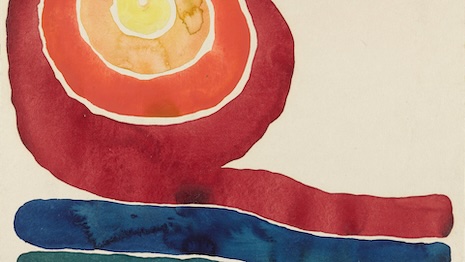
 Lisa Koenigsberg is founder/president of Initiatives in Art and Culture
Lisa Koenigsberg is founder/president of Initiatives in Art and Culture Beauford Delaney, Greene Street, 1940, Oil on canvas, 22½x17½ in. Museum of Fine Arts, Boston, 2011.1824, The John Axelrod Collection Frank B. Bemis Fund, Charles H. Bayley Fund, and The Heritage Fund for a Diverse Collection. All Rights Reserved
Beauford Delaney, Greene Street, 1940, Oil on canvas, 22½x17½ in. Museum of Fine Arts, Boston, 2011.1824, The John Axelrod Collection Frank B. Bemis Fund, Charles H. Bayley Fund, and The Heritage Fund for a Diverse Collection. All Rights Reserved Georgia O’Keeffe, Evening Star No. III, 1917, watercolor on paper mounted on board, 8 7/8 x 11 ⅞, The Museum of Modern Art, New York. Mr. and Mrs. Donald B. Straus Fund, 1958, © 2024 Georgia O’Keeffe Museum / Artists Rights Society (ARS), New York
Georgia O’Keeffe, Evening Star No. III, 1917, watercolor on paper mounted on board, 8 7/8 x 11 ⅞, The Museum of Modern Art, New York. Mr. and Mrs. Donald B. Straus Fund, 1958, © 2024 Georgia O’Keeffe Museum / Artists Rights Society (ARS), New York Ben Shahn, The Passion of Sacco and Vanzetti, 1932, tempera on canvas, 84 × 48 in. The Whitney Museum
Ben Shahn, The Passion of Sacco and Vanzetti, 1932, tempera on canvas, 84 × 48 in. The Whitney Museum